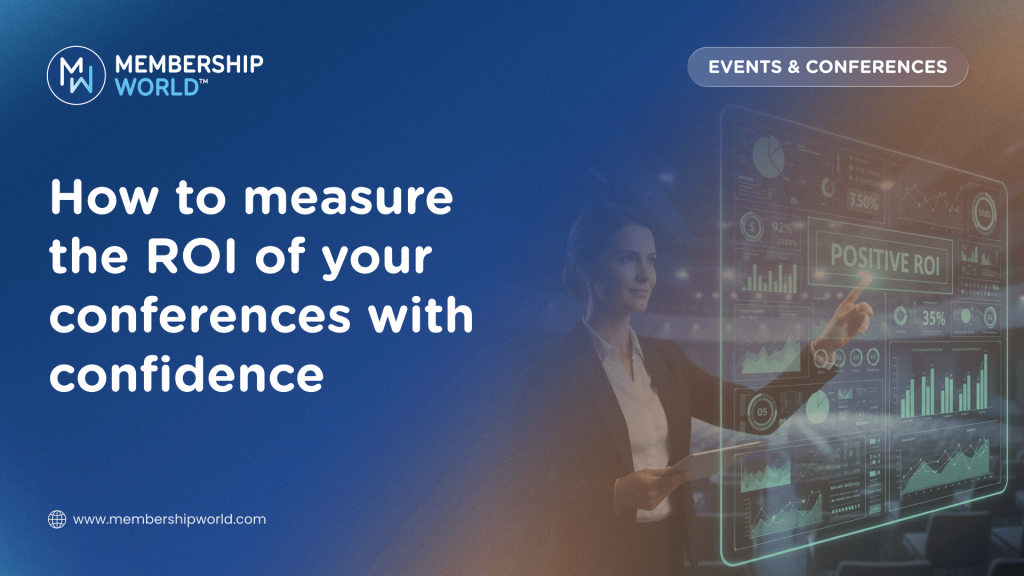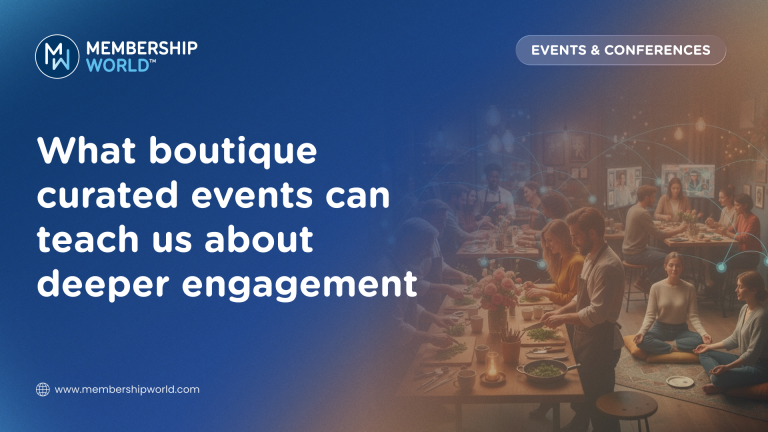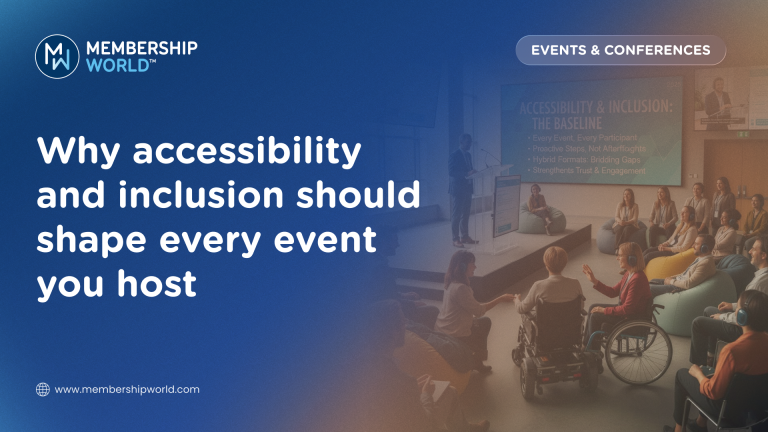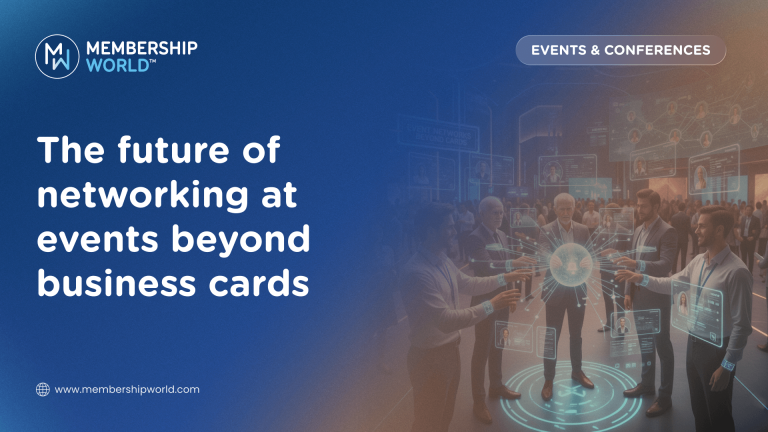
For most associations, conferences are the single biggest investment of the year. They demand months of planning, endless coordination, and a significant budget.
But when it’s all over — the applause fades, the banners come down, and the invoices start rolling in — one question always surfaces:
Was it worth it?
Return on Investment (ROI) is one of the hardest — and most important — metrics for event professionals to define. It’s not just about revenue. It’s about value: for attendees, sponsors, speakers, and, ultimately, the association itself.
Let’s explore how associations can confidently measure ROI — not just in pounds or dollars, but in impact.
TLDR:
- ROI is more than profit; it’s about outcomes and long-term value
- Define success before the event, not after
- Track both quantitative and qualitative metrics
- Measure engagement, satisfaction, and post-event actions — not just attendance
1. Start by defining what ROI means to your association
Before you can measure success, you need to agree on what “success” looks like.
Ask your team:
- Are we focused on financial ROI (revenue vs. cost)?
- Do we want to grow member engagement or retention?
- Is our goal to attract new sponsors or exhibitors?
- Or do we want to strengthen our brand authority in the sector?
Every association’s answer will be different. A professional body might care most about CPD credits delivered. A trade association might care about deals and partnerships made.
You can’t measure what you haven’t defined.
2. Capture the full picture — before, during, and after
ROI doesn’t start on event day and end at the closing session. The full value of a conference plays out over time.
Here’s how to think of it:
- Before the event: registrations, sponsor sign-ups, website traffic, and marketing reach
- During the event: attendance rates, engagement (polls, Q&A, app activity), and satisfaction scores
- After the event: renewals, new memberships, lead conversions, and repeat sponsor interest
Map these data points in advance so you can track ROI as an ongoing story — not a one-time snapshot.
3. Measure both numbers and narratives
Data is crucial, but it doesn’t tell the whole story.
Yes, track:
- Revenue vs. cost
- Attendance and session participation
- Leads generated for sponsors
- Social media mentions and engagement
But also listen to the stories that emerge:
- What did attendees say they learned or valued most?
- Which sessions sparked follow-up conversations?
- Did the event strengthen your community’s sense of belonging?
A powerful conference doesn’t just make money — it makes members feel something.
4. Don’t forget the sponsor’s perspective
Sponsors are key to event sustainability, yet many associations measure their satisfaction last.
To show real ROI to sponsors, ask:
- How many quality leads did they capture?
- Did their brand visibility meet expectations?
- Were they able to engage directly with the right audience?
Sharing post-event reports and insights with sponsors not only demonstrates transparency — it also builds trust and sets the stage for renewals.
5. Track digital engagement for deeper insight
Whether your event is in-person, hybrid, or virtual, digital engagement tells you what truly resonated.
Monitor:
- App or platform analytics (most viewed sessions, networking activity)
- Post-event content views (recordings, slides, resources)
- On-demand engagement (how long people watch or rewatch sessions)
These insights reveal which topics drive long-term interest — valuable data for next year’s planning.
6. Translate impact into clear metrics
To make ROI meaningful, express outcomes in relatable terms. For example:
- “Each £1 spent generated £1.60 in value.”
- “80% of attendees reported new professional connections.”
- “Sponsor renewals increased by 30%.”
Even qualitative feedback can be quantified: convert survey results into percentages, and highlight recurring themes.
Clear numbers make impact visible — and credible — to boards and stakeholders.
7. Connect event outcomes to member value
The ultimate question isn’t “Was the event profitable?” It’s “Did it help our members?”
Measure:
- Knowledge gained (through feedback surveys or follow-up quizzes)
- Career outcomes (promotions, new clients, collaborations)
- Member retention or acquisition after the event
When conferences deliver real member value, ROI becomes more than an equation — it becomes a story of growth and connection.
8. Build ROI measurement into your event design
Don’t wait until after the event to start thinking about metrics. Plan them from day one.
Incorporate tools like:
- Pre-event benchmarking surveys
- Live polls and interactive sessions
- Post-event engagement tracking
- Feedback loops built into your app or email follow-ups
By designing your event with measurement in mind, you’ll not only collect better data but also create more engaging experiences along the way.
Final Thoughts
ROI isn’t a report — it’s a reflection of your event’s true purpose.
When you define success early, measure consistently, and listen closely to your members and sponsors, you move beyond counting numbers to capturing value.
Because for associations, every successful conference isn’t just an event — it’s an investment in community, reputation, and the future of membership.
💬 How does your team measure ROI after major events?



